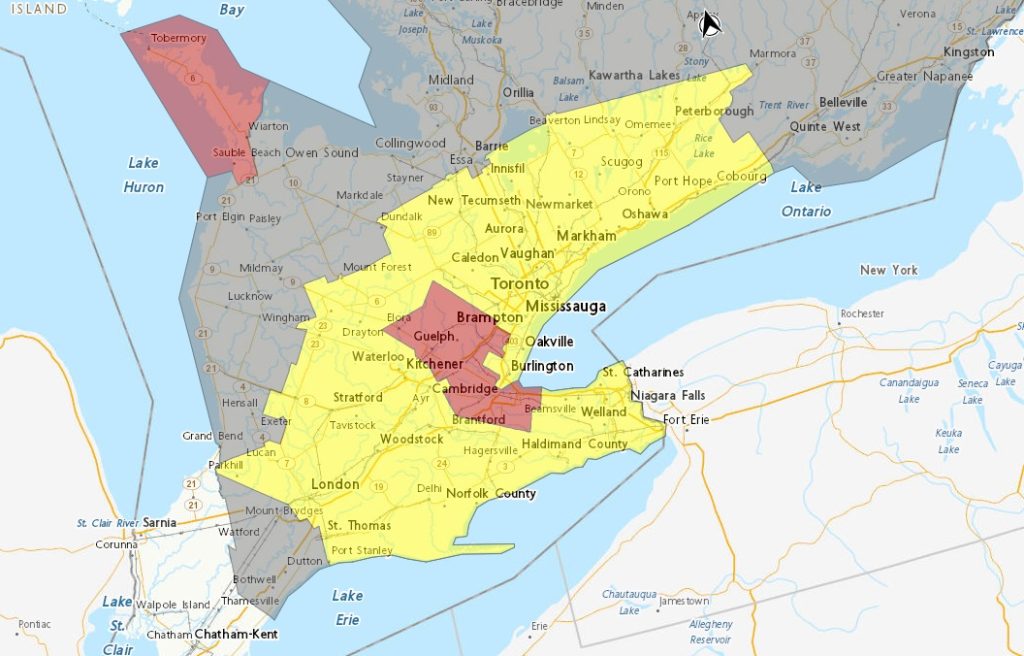Transportation Safety Board of Canada to investigate Polar Prince role in Titan implosion

Posted June 23, 2023 4:36 pm.
Last Updated June 23, 2023 5:02 pm.
The Transportation Safety Board of Canada (TSB) says it will investigate a Canadian support ship’s role in the catastrophic implosion of the Titan submersible.
The TSB says the Canadian-flagged cargo vessel Polar Prince was at the Titanic wreck site off Newfoundland providing surface support for the submersible when it began its descent around 8 a.m. on June 18. Approximately one hour and 45 minutes after the submersible began its descent, the support vessel lost contact.
Rescue ships, planes and other equipment were rushed to the site of the disappearance but any sliver of hope that remained for finding the crew alive was wiped away early Thursday when the submersible’s 96-hour supply of air was expected to run out.
The Coast Guard then announced that debris had been found roughly 1,600 feet (488 meters) from the Titanic and that a “catastrophic implosion of the vessel” had killed everyone on board.
The TSB says there were 17 crew members and 24 people on board the Polar Prince. Five people from the Polar Prince were on board the Titan.
“In accordance with the Canadian Transportation Accident Investigation and Safety Board Act and international agreements, the TSB, as the investigation authority of the flag state of the support vessel involved in the occurrence, will conduct a safety investigation regarding the circumstances of this operation conducted by the Canadian-flagged vessel Polar Prince,” the agency said in a statement.
“A team of TSB investigators is travelling to St. John’s, Newfoundland and Labrador, to gather information, conduct interviews, and assess the occurrence.”
The ship, a former Canadian Coast Guard vessel, is owned by the Miawpukek First Nation in southern Newfoundland.
“We want to commend our crews on the Polar Prince and Horizon Arctic who have worked tirelessly over the last number of days on the search and rescue effort,” the company and Chief Misel Joe said in a statement. “In particular the crew on the Polar Prince for carrying out command responsibilities early in the search and the Horizon Arctic crew for so quickly moving the US ROV to the site.”
RELATED: How the unconventional design of the Titan sub may have destined it for disaster
It was not entirely clear Friday who would have the authority to lead what is sure to be a complex investigation involving several countries. OceanGate Expeditions, the company that owned and operated the Titan, is based in the U.S. but the submersible was registered in the Bahamas. OceanGate is based in Everett, Washington, but closed when the Titan was found. Meanwhile, the Titan’s mother ship, the Polar Prince, was from Canada, and the people on board the submersible were from England, Pakistan, France, and the U.S.
The National Transportation Safety Board said Friday that the U.S. Coast Guard has declared the loss of the Titan submersible to be a “major marine casualty” and the Coast Guard will lead the investigation. NTSB spokesperson Peter Knudson said that information was provided to the agency’s senior management by Coast Guard officials, and the NTSB has joined the investigation.
The Coast Guard has not confirmed that it will lead the investigation. Coast Guard headquarters said the Coast Guard First District in Boston will discuss future operations and plans, but did not say when. The First District did not respond to phone and email messages seeking comment Friday.
How the overall investigation of the tragedy will proceed is complicated by the fact that the world of deep-sea exploration is not well-regulated.
The Titan was not registered as a U.S. vessel or with international agencies that regulate safety. And it wasn’t classified by a maritime industry group that sets standards on matters such as hull construction.
Files from The Associated Press were used in this report








